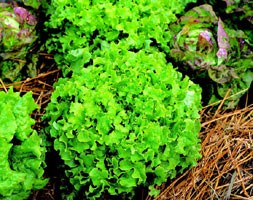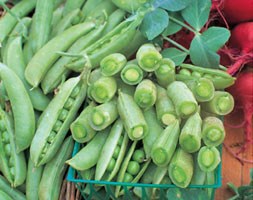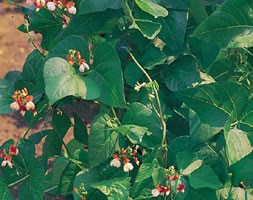Price reductions at Crocus
by Sarah - August 7th, 2013.Filed under: Crocus, Price Reductions.
Crocus reduced the price on these products today
lettuce ‘Salad Bowl’ (lettuce (cut and come again)) was £1.49 now £0.99
Position: full sun Soil: humus-rich, moisture retentive soil The fresh lime green leaves of this light and crunchy lettuce shine out from the plot and are every bit as tasty as they look. Deeply-lobed, a little like an oak leaf, they are borne in profusion from a loose heart, so you can harvest the outer leaves over several weeks and it will continue producing more. Alternate plants with ‘Red Salad Bowl’ lettuces for a pretty and colourful edging in flowerbeds and decorative veg gardens. Growing Instructions Sow into trays or modules in the greenhouse or on a windowsill and harden off before planting out. Or sow direct in shallow drills where they are to grow, either in containers or in the open ground, thinning seedlings to 15cm apart. Protect from slugs and cover early sowings with a cloche. Sow: March-July Harvest: May-September Approximate quantity: 1000 seeds.
Helianthus ‘Tall Single’ (sunflower) was £1.49 now £0.99
Position: full sun Soil: moderately fertile, humus-rich, moist but well-drained, neutral to alkaline soil Rate of growth: fast-growing Flowering period: July to September Flower colour: yellow Other features: contact with the foliage may aggravate skin allergies Hardiness: hardy annual The sunny-faced flowers of this fun and easy to grow plant are universally loved. Appearing on tall stems, the flowerheads can grow up to 30cm across, and consist of a row of petal-like florets surrounding a large eye, which turns darker with age as the seeds develop. These seeds are loved by many different kinds of birds, so the plants are ideal for wildlife friendly gardens. Where space is limited they can even be grown in large pots, provided they are kept well fed and watered. Garden care: Under glass, start them off in late winter by planting the seeds up to 5cm deep in deep pots or root trainers filled with good seed compost. When large enough to handle, plant outside in spring after gradually hardening off. Alternatively, sow directly into a well-prepared seed bed in spring and thin to 30cm as they grow. If sowing outside, temporarily cover the bed with a net to protect the seeds from birds, and keep an eye out for slugs and snails when the seedlings emerge. Sow: February-June Flowering: June-September Approximate quantity: 50 seeds.
Lathyrus odoratus ‘Mollie Rillstone’ (spencer sweet pea seed Mollie Rillstone) was £1.99 now £1.29
Position: full sun Soil: fertile, humus-rich, well-drained soil Rate of growth: average to fast-growing Flowering period: June to September Flower colour: cream flushed with pink Other features: highly scented flowers Hardiness: hardy annual Each picotee petal has a creamy coloured base that becomes pinker towards the outer edges. The scent of the flowers is strong and delicious and the blooms are of exhibition quality. Mix it with rich pinks and plums or lilacs and purples for a great effect. Not just pretty to look at though, they will also act as a magnet for beneficial insects. Garden care: From October to late February, sow seeds into deep pots or root trainers filled with a good-quality seed compost and place them in a cold frame. Pinch out the tips as the plants grow to encourage them to become bushier and produce more flowers, and harden off before planting out in early April. Direct sowings can also be made in October or March-April. It is important to remove the faded flowers before they set seed, so picking them to fill a vase inside will only encourage more to form. Sow: October-April Flowering: June-September Approximate quantity: 20 seeds.
Lathyrus odoratus ‘Leamington’ (spencer sweet pea seed Leamington) was £1.99 now £1.29
Position: full sun Soil: fertile, humus-rich, well-drained soil Rate of growth: average to fast-growing Flowering period: June to September Flower colour: lilac-lavender Other features: highly scented flowers Hardiness: hardy annual Sweetly scented, lavender blooms that make super cut flowers, appear throughout the summer on this gorgeous sweet pea. A favourite for the cottage garden, they will also thrive in pots, where they will quickly scramble up an obelisk or tepee of bamboo canes. Bees and other beneficial insects will flock to them in the garden and their heady perfume will keep them coming back for more. In our (not very scientific) sweet pea trial on the nursery, we found that this variety had a strongly scented flowers (but not as good as King’s High Scent), with around 3 flowers on each 10-12″ stem. It was also still flowering well in August. All the sweet-peas in our trial produced significantly better plants when the seeds were sown in autumn rather than spring. Garden care: From October to late February, sow seeds into deep pots or root trainers filled with a good-quality seed compost and place them in a cold frame. Pinch out the tips as the plants grow to encourage them to become bushier and produce more flowers, and harden off before planting out in early April. Direct sowings can also be made in October or March-April. It is important to remove the faded flowers before they set seed, so picking them to fill a vase inside will only encourage more to form. Sow: October-April Flowering: June-September Approximate quantity: 20 seeds.
Lathyrus odoratus ‘Hunters Moon’ (spencer sweet pea seed Hunters Moon) was £1.99 now £1.29
Position: full sun Soil: fertile, humus-rich, well-drained soil Rate of growth: average to fast-growing Flowering period: June to September Flower colour: rich cream Other features: scented flowers Hardiness: hardy annual Rich cream-coloured petals form gloriously scented flowers that appear throughout the summer on these much-loved, cottage garden plants. Plant them at the base of a sunny south-facing wall and provide something for them to scramble up, or pot several into a large container topped with an obelisk to create an elegant feature for the patio. In our (not very scientific) sweet pea trial on the nursery, we found that this variety still had lots of lightly scented, creamy white flowers in August, and these were carried on 8 – 10″ stems. All the sweet-peas in our trial produced significantly better plants when the seeds were sown in autumn rather than spring. Garden care: From October to late February, sow seeds into deep pots or root trainers filled with a good-quality seed compost and place them in a cold frame. Pinch out the tips as the plants grow to encourage them to become bushier and produce more flowers, and harden off before planting out in early April. Direct sowings can also be made in October or March-April. It is important to remove the faded flowers before they set seed, so picking them to fill a vase inside will only encourage more to form. Sow: October-April Flowering: June-September Approximate quantity: 20 seeds.
Lathyrus odoratus ‘King’s High Scent’ (modern grandiflora sweet pea seed King’s High Scent) was £2.49 now £1.49
Position: full sun Soil: fertile, humus-rich, well-drained soil Rate of growth: average to fast-growing Flowering period: June to September Flower colour: Creamy-yellow with a violet picotee edge Other features: the flowers have a knock-out scent Hardiness: hardy annual The delicate picotee colouring of this sweet pea, coupled with the flowers unusually powerful scent, make this a beautiful addition to the flower garden. Where space is at a premium, try filling large pots with them, and top it with a woven obelisk that they can scramble over. Throughout summer you will have a stunning feature for your terrace. In our (not very scientific) sweet pea trial on the nursery, we found that this variety had the most fantastic scent of all. The flowers were held on very long stems approximately 6-9″ long, but it only has a few flowers left in August. All the sweet-peas in our trial produced significantly better plants when the seeds were sown in autumn rather than spring. Garden care: From October to late February, sow seeds into deep pots or root trainers filled with a good-quality seed compost and place them in a cold frame. Pinch out the tips as the plants grow to encourage them to become bushier and produce more flowers, and harden off before planting out in early April. Direct sowings can also be made in October or March-April. It is important to remove the faded flowers before they set seed, so picking them to fill a vase inside will only encourage more to form. Sow: October-April Flowering: June-September Approximate quantity: 20 seeds.
Lathyrus odoratus ‘Spencer Waved Mix’ (spencer sweet pea seed Spencer Waved Mix) was £1.99 now £1.49
Position: full sun Soil: fertile, humus-rich, well-drained soil Rate of growth: average to fast-growing Flowering period: June to September Flower colour: mixed shades Other features: highly scented flowers Hardiness: hardy annual If you want a cacophony of colour and a garden filled with heady perfume, then this ready-made blend might be just the ticket. It contains a mix of sweet peas that have been chosen for their outstandingly high quality blooms, which appear in shades of pink, lilac, red and white. A classic for the summer garden. Garden care: From October to late February, sow seeds into deep pots or root trainers filled with a good-quality seed compost and place them in a cold frame. Pinch out the tips as the plants grow to encourage them to become bushier and produce more flowers, and harden off before planting out in early April. Direct sowings can also be made in October or March-April. It is important to remove the faded flowers before they set seed, so picking them to fill a vase inside will only encourage more to form. Sow: October-April Flowering: June-September Approximate quantity: 35 seeds.
pea ‘Sugar Snap’ (pea) was £2.49 now £1.99
Position: full sun Soil: fertile, moist but well drained A multi-purpose pea which lets you choose how to eat it! Pick when it’s flat and the peas haven’t started swelling for super-sweet mangetout. Wait a while, till the pods just start to swell, and you’ll have delicately-flavoured snow peas, tender enough to eat pod and all. Or leave to maturity and shell for plump, round and succulent peas. The curly tendrils, flowers and the tips of pea plants can also be eaten, and have a beautifully delicate flavour. Snip them off 8-10cm from the top and try them raw in salads or scattered into stir-fries. Growing Instructions: Make a broad flat-bottomed drill 5cm deep and 10cm wide. Water it, then place the peas in a staggered double row before backfilling with soil. The peas are tall-growing so support them as they grow with twiggy peasticks or canes and string. Protect from mice and slugs, and if growing during summer cover with horticultural fleece against pea moth. Sow: April-May Harvest: June-August Approximate quantity: 250 seeds.
runner bean ‘Painted Lady’ (runner bean) was £2.49 now £1.99
Position: full sun Soil: deep and fertile with reliable moisture A Victorian variety that’s been making a well-deserved comeback as gardeners rediscover its reliability, productivity and beauty the plant has bicoloured flowers in red and white, making it decorative enough to plant among your flowers. The medium-length pods have a rich, full flavour and are produced over a long season if picked regularly. The flowers are edible too and make a colourful garnish. Growing Instructions: Choose a spot in full sun with the richest soil you can provide: dig in plenty of well-rotted organic matter before planting. From late spring sow seeds direct 5cm deep and about 20cm apart and support with sturdy hazel bean poles. Protect seedlings from slugs and squash blackfly as soon as they appear on shoot tips. Pinch out the leading shoots of runner beans when they reach the tops of their supports so they concentrate on making more beans instead of heading skywards. Sow: April-June Harvest: July-October Approximate quantity: 45 seeds.















